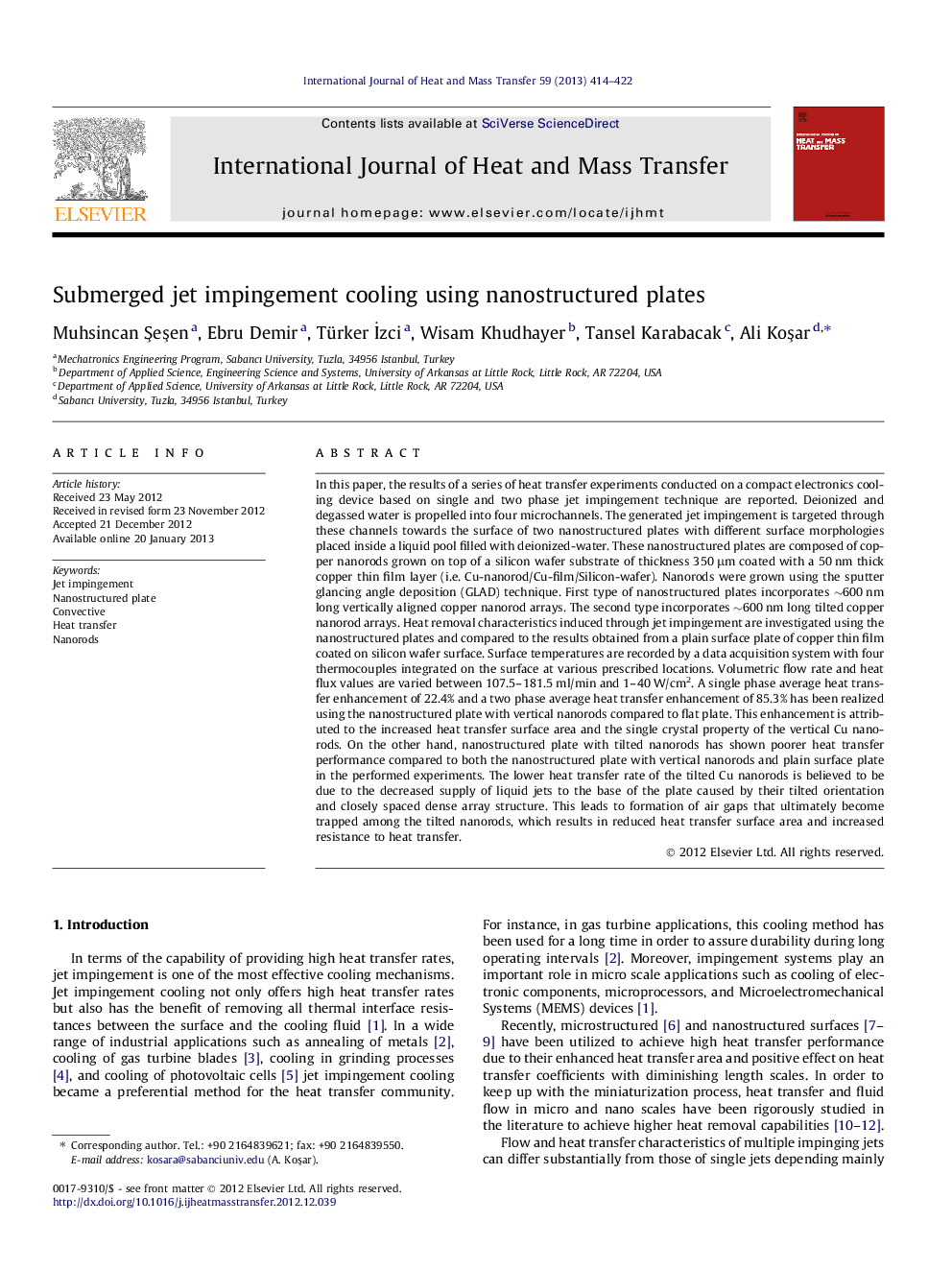| کد مقاله | کد نشریه | سال انتشار | مقاله انگلیسی | نسخه تمام متن |
|---|---|---|---|---|
| 658573 | 1458083 | 2013 | 9 صفحه PDF | دانلود رایگان |

In this paper, the results of a series of heat transfer experiments conducted on a compact electronics cooling device based on single and two phase jet impingement technique are reported. Deionized and degassed water is propelled into four microchannels. The generated jet impingement is targeted through these channels towards the surface of two nanostructured plates with different surface morphologies placed inside a liquid pool filled with deionized-water. These nanostructured plates are composed of copper nanorods grown on top of a silicon wafer substrate of thickness 350 μm coated with a 50 nm thick copper thin film layer (i.e. Cu-nanorod/Cu-film/Silicon-wafer). Nanorods were grown using the sputter glancing angle deposition (GLAD) technique. First type of nanostructured plates incorporates ∼600 nm long vertically aligned copper nanorod arrays. The second type incorporates ∼600 nm long tilted copper nanorod arrays. Heat removal characteristics induced through jet impingement are investigated using the nanostructured plates and compared to the results obtained from a plain surface plate of copper thin film coated on silicon wafer surface. Surface temperatures are recorded by a data acquisition system with four thermocouples integrated on the surface at various prescribed locations. Volumetric flow rate and heat flux values are varied between 107.5–181.5 ml/min and 1–40 W/cm2. A single phase average heat transfer enhancement of 22.4% and a two phase average heat transfer enhancement of 85.3% has been realized using the nanostructured plate with vertical nanorods compared to flat plate. This enhancement is attributed to the increased heat transfer surface area and the single crystal property of the vertical Cu nanorods. On the other hand, nanostructured plate with tilted nanorods has shown poorer heat transfer performance compared to both the nanostructured plate with vertical nanorods and plain surface plate in the performed experiments. The lower heat transfer rate of the tilted Cu nanorods is believed to be due to the decreased supply of liquid jets to the base of the plate caused by their tilted orientation and closely spaced dense array structure. This leads to formation of air gaps that ultimately become trapped among the tilted nanorods, which results in reduced heat transfer surface area and increased resistance to heat transfer.
Journal: International Journal of Heat and Mass Transfer - Volume 59, April 2013, Pages 414–422